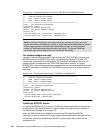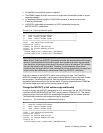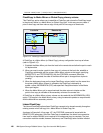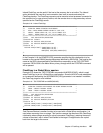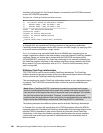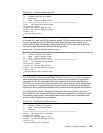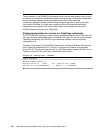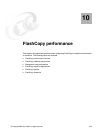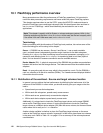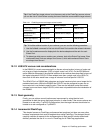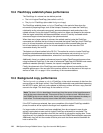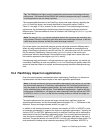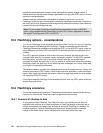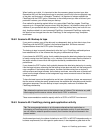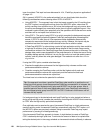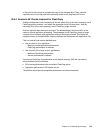
112 IBM System Storage DS6000 Series: Copy Services with IBM System z
10.1 FlashCopy performance overview
Many parameters can affect the performance of FlashCopy operations. It is important to
review the data processing requirements and hence select the proper FlashCopy options.
This chapter examines when to use the COPY versus the NOCOPY mode and where to
place the FlashCopy source and target volumes/LUNs. We also discuss when and how to
use
incremental FlashCopy—which should definitely be evaluated for use in most
applications.
Terminology
Before proceeding with the discussion of FlashCopy best practices, lets review some of the
basic terminology we will be using in this chapter.
Server - A DS6000 has two servers—Server 0 and Server 1, one on each controller
card—and each server independently provides major functions for the disk subsystem:
Directing
host adapters for data transferring to and from host processors, managing cache
resources, and directing lower
device adapters for transferring data to and from physical
disks. You can issue the lsserver command to see the available servers.
Device Adapter (DA) - A physical component of the DS6000 that provides communications
between the servers and the storage devices. The lsda command lists the available device
adapters.
Rank - An array site made into an array which is then made into a rank. For the DS6000 a
rank is a collection of 8 disk drive modules (DDMs). The lsrank command displays detailed
information about the ranks.
10.1.1 Distribution of the workload - Source and target volumes location
In general, you can achieve the best performance by distributing the load across all of the
resources of the DS6000. In other words, you should carefully plan your usage so that the
load is:
Spread evenly across disk subsystems
Within each disk subsystem, spread evenly across servers
Within each server, spread evenly across device adapters
Within each device adapter, spread evenly across ranks
Additionally, it is always best to locate the FlashCopy target volume on the same DS6000
server as the FlashCopy source volume. It is also good practice to locate the FlashCopy
target volume on a different device adapter (DA) than the source volume, but there are some
cases where this is really a
don’t care decision.
Another choice available is whether to place the FlashCopy target volumes on the same
ranks as the FlashCopy source volumes. In general it is best not to place these two volumes
in the same rank. Refer to Table 10-1 on page 113 for a summary of the volume placement
considerations.
Note: This chapter is equally valid for System z volumes and open systems LUNs. In the
following sections only the term
volume or volumes will be used, but the text is equally valid
if the terms LUN and LUNs were used,
unless otherwise noted.



